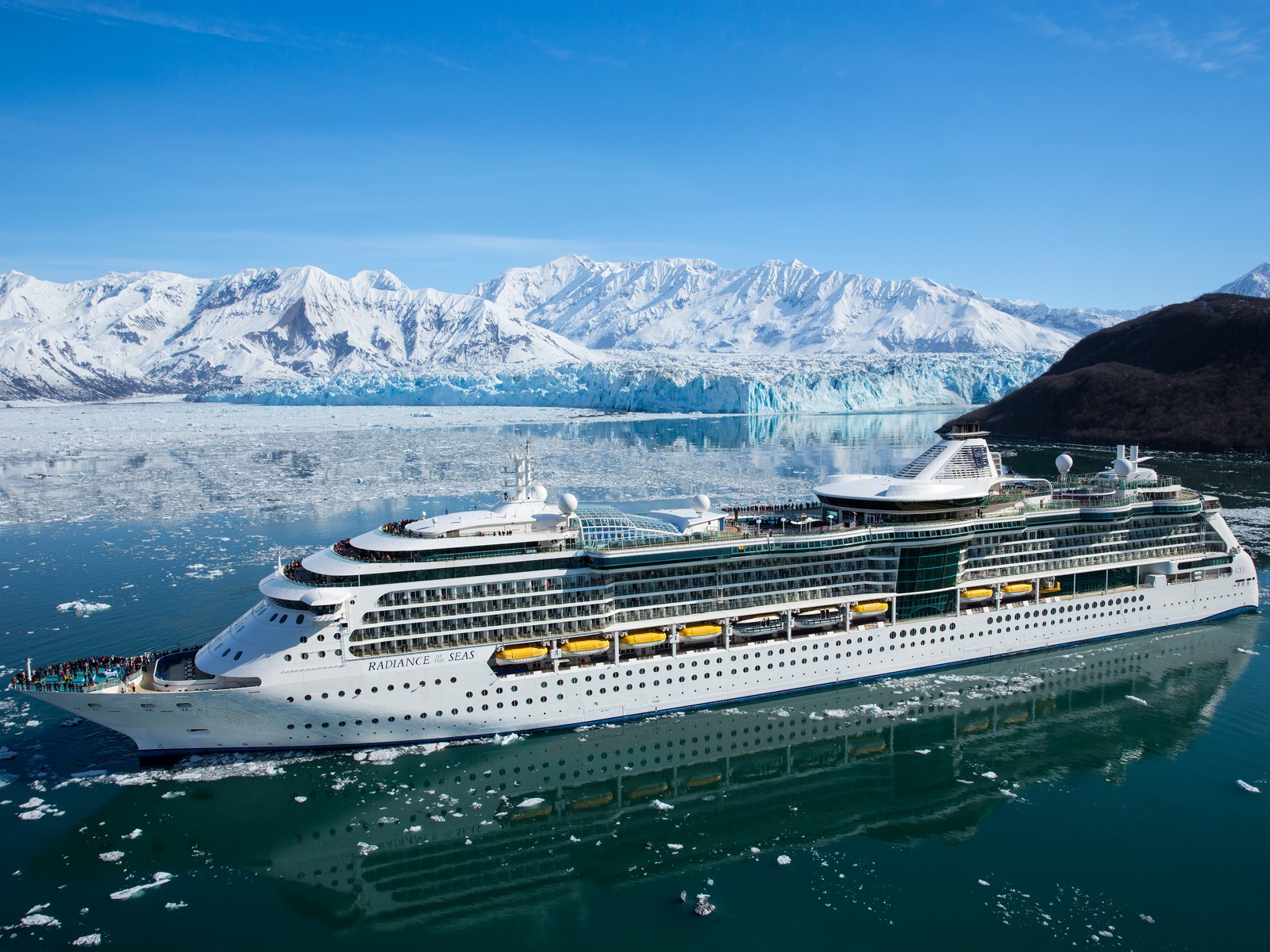Cruise Lines to Alaska offer an unparalleled opportunity to explore the breathtaking landscapes and abundant wildlife of the Last Frontier. This guide delves into the diverse options available, from luxurious liners catering to discerning travelers to family-friendly vessels offering a range of onboard activities. We’ll explore the various cruise itineraries, onboard amenities, and essential planning considerations to help you craft an unforgettable Alaskan adventure.
From the majestic glaciers calving into the sea to the abundant wildlife thriving in pristine wilderness, an Alaskan cruise promises an immersive experience unlike any other. We’ll cover the top cruise lines, compare their offerings, and guide you through the process of selecting the perfect itinerary to match your preferences and budget, ensuring a seamless and enjoyable journey.
Cruise Ship Features and Accommodations
Alaska cruises offer a wide variety of onboard experiences, ensuring comfort and enjoyment for all passengers. The ships themselves are designed to provide both relaxation and exciting activities, catering to diverse interests and age groups. Understanding the range of cabin types, dining options, and entertainment available is key to planning a memorable Alaskan adventure.
Cabin Types and Amenities
Alaska cruise ships offer a spectrum of cabin categories, each varying in size, location, and included amenities. Interior staterooms are the most compact, offering a comfortable, basic space, ideal for budget-conscious travelers who prioritize spending time exploring Alaska rather than their cabin. Oceanview staterooms provide a window offering glimpses of the stunning Alaskan scenery. Balcony staterooms, a popular choice, offer private outdoor space perfect for enjoying the breathtaking views and fresh sea air. Suites are the most luxurious option, featuring significantly larger spaces, enhanced amenities like separate living areas and larger bathrooms, and often include butler service. The specific amenities within each category may vary slightly depending on the cruise line and the ship. For example, some suites might include a whirlpool tub, while others might offer complimentary access to specialty dining venues.
Onboard Dining Options
Dining is a significant part of the Alaska cruise experience, with a variety of options available to suit different tastes and budgets. The quality and variety of food offered across price points are generally high, reflecting the emphasis placed on culinary experiences.
| Restaurant Type | Price Point | Description of Cuisine | Special Features |
|---|---|---|---|
| Main Dining Room | Included | Varied menu with regional American and international options, changing daily. | Formal and informal seating options, often with multiple dining times. |
| Casual Dining | Included | Buffet-style dining with a wide selection of options, including lighter fare, salads, and desserts. | Family-friendly atmosphere, convenient and flexible dining times. |
| Specialty Restaurants | Additional Fee | Upscale dining experiences featuring unique culinary themes, such as steak houses, Italian trattorias, or seafood restaurants. | Reservations often required, enhanced ambiance, and more sophisticated menus. |
| Room Service | Additional Fee (sometimes included for certain cabin categories) | Limited menu available for delivery to your stateroom. | Convenient for late-night snacks or meals in the comfort of your cabin. |
Onboard Entertainment and Activities
Alaska cruise ships offer a diverse range of entertainment and activities to cater to all ages and interests. Families with children can enjoy dedicated kids’ clubs with supervised activities, age-appropriate games, and entertainment. Adults can participate in a variety of activities such as cooking demonstrations, wine tastings, trivia contests, live music performances, and Broadway-style shows. Many ships also offer enrichment programs focusing on Alaskan wildlife, culture, and history, through lectures and presentations by experts. Relaxation options abound, with spas, pools, and fitness centers offering opportunities to unwind and rejuvenate. Additionally, many ships have outdoor spaces suitable for viewing the Alaskan scenery, allowing passengers to enjoy the beauty of the natural surroundings.
Planning an Alaskan Cruise
Embarking on an Alaskan cruise is a thrilling adventure, but careful planning ensures a smooth and memorable journey. This section provides a step-by-step guide to booking your Alaskan cruise, addresses potential challenges, and offers practical packing advice.
Booking an Alaskan cruise involves several key steps, from researching itineraries to finalizing your travel arrangements. Understanding the process and employing smart strategies can lead to significant savings and a more enjoyable experience.
Booking an Alaskan Cruise: A Step-by-Step Guide
- Determine your travel dates and budget: Alaskan cruise season typically runs from May to September. Consider peak season (June-August) for optimal weather but expect higher prices. Establish a realistic budget encompassing cruise fare, flights, shore excursions, and incidentals.
- Research cruise lines and itineraries: Various cruise lines offer Alaskan cruises, each with unique itineraries, ship amenities, and price points. Research different options, focusing on desired ports of call, cruise duration, and onboard activities. Consider factors like the size of the ship (smaller ships often access smaller ports) and the type of experience you seek (luxury, family-friendly, adventure-focused).
- Compare prices and book: Use online travel agencies and cruise line websites to compare prices. Look for deals and discounts, such as early booking offers or last-minute deals (though these can be less predictable). Booking directly with the cruise line often provides more flexibility and potential for better customer service. Remember to read the fine print regarding cancellation policies and insurance options.
- Book flights and shore excursions: Arrange your flights to and from your embarkation/disembarkation port, considering potential flight delays. Pre-booking shore excursions is recommended, especially for popular activities, to secure your spot and often receive a better price. Research the different excursion options available at each port to match your interests and budget.
- Finalize travel insurance and other arrangements: Consider travel insurance to protect against unforeseen circumstances such as cancellations or medical emergencies. Confirm your passport and visa requirements (if applicable) well in advance of your departure date. Arrange for transportation to and from the airport and cruise port.
Potential Challenges and Solutions
While planning an Alaskan cruise is exciting, certain challenges might arise. Addressing these proactively ensures a smoother journey.
- High prices during peak season: Consider traveling during the shoulder seasons (May or September) for potentially lower fares and fewer crowds. Alternatively, look for deals and discounts offered by cruise lines or travel agencies.
- Limited availability of shore excursions: Book shore excursions well in advance, especially popular ones. Consider less-popular excursions or alternative activities to avoid disappointment.
- Unpredictable weather conditions: Pack layers of clothing to adapt to varying weather conditions. Check the weather forecast before each excursion and be prepared for rain, wind, or even occasional snow, even in summer months.
- Seasickness: If prone to seasickness, consult your doctor about preventative medication and consider booking a cabin on a lower deck and mid-ship for a smoother ride. Pack remedies like ginger candies or wristbands.
- Accessibility issues: Inform the cruise line about any accessibility needs in advance to ensure appropriate accommodations and assistance are arranged. Research shore excursions for their accessibility features.
Packing for an Alaskan Cruise
Packing for an Alaskan cruise requires careful consideration of the variable weather conditions and planned activities. Layering is key.
- Waterproof and windproof outer layers: A good quality waterproof and windproof jacket is essential, regardless of the season. Consider a rain pants as well.
- Warm layers: Pack several layers of warm clothing, including sweaters, fleece jackets, and thermal underwear. Even in summer, temperatures can drop significantly, especially in the evenings or at higher altitudes.
- Comfortable walking shoes: You’ll be doing a lot of walking, both on the ship and during shore excursions. Choose comfortable, sturdy shoes suitable for various terrains.
- Sun protection: Even on cloudy days, the sun’s reflection off the water and snow can be intense. Pack sunscreen, sunglasses, and a hat.
- Insect repellent: Mosquitoes and other insects can be prevalent in certain areas. Pack insect repellent, especially if you plan on hiking or spending time outdoors.
- Binoculars: Enhance your wildlife viewing experience by bringing binoculars to spot whales, bears, and other Alaskan wildlife.
- Camera and extra batteries: Capture the stunning scenery and wildlife encounters with a good quality camera. Bring extra batteries to ensure you don’t miss any photo opportunities.
Sustainability and Environmental Impact
The pristine beauty of Alaska’s natural environment is a major draw for cruise tourism, but the industry’s impact on this delicate ecosystem is a significant concern. The sheer size of cruise ships and the number of passengers they carry necessitate careful consideration of environmental responsibility. Balancing the economic benefits of cruise tourism with the need for environmental protection is a complex challenge addressed through various initiatives by cruise lines and individual travelers.
The environmental impact of cruise ships in Alaska is multifaceted. Exhaust emissions from ships contribute to air pollution, impacting air quality in coastal regions and potentially contributing to climate change. Discharge of wastewater, even treated, can affect marine life and water quality. Noise pollution from ship engines and onboard activities can disrupt marine mammals and other wildlife. Anchor damage to sensitive seabeds is another concern, as is the potential for accidental oil spills or other accidents.
Cruise Line Initiatives for Environmental Mitigation
Cruise lines are implementing various strategies to reduce their environmental footprint. These include investing in cleaner fuel technologies, such as liquefied natural gas (LNG), which significantly reduces emissions compared to traditional bunker fuel. Advanced wastewater treatment systems are being employed to minimize the impact of discharged wastewater. Shore power connections in ports allow ships to switch off their engines while docked, reducing emissions. Many lines are also actively participating in environmental monitoring programs, collecting data on water quality and marine life to better understand and mitigate their impact. For example, some cruise lines are collaborating with research institutions to study the effects of their operations on the Alaskan ecosystem and to develop more effective mitigation strategies. These collaborations provide valuable data and contribute to the development of environmentally sound practices within the industry.
Support for Alaskan Communities and Environmental Preservation
Beyond environmental mitigation, cruise lines are also engaging in initiatives to support Alaskan communities and preserve the natural environment. This includes partnering with local organizations on conservation projects, supporting sustainable tourism practices, and providing educational programs for passengers and crew about the importance of environmental stewardship. Many cruise lines contribute financially to organizations dedicated to protecting Alaskan wildlife and habitats. This financial support often goes towards crucial research, conservation efforts, and community-based initiatives focused on preserving the unique ecosystems of Alaska. Furthermore, the cruise industry provides substantial economic benefits to Alaskan communities through employment opportunities and the revenue generated from tourism.
Eco-Friendly Practices for Travelers
Individual travelers can also contribute to sustainable Alaskan cruising. Reducing waste by reusing water bottles, minimizing single-use plastics, and properly disposing of waste is crucial. Respecting wildlife by maintaining a safe distance and avoiding disruptive behavior is essential. Supporting local businesses and purchasing locally sourced products helps contribute to the Alaskan economy while minimizing the environmental impact of transportation. Choosing cruise lines with strong environmental sustainability programs is also a powerful way for travelers to contribute to responsible tourism. By making conscious choices, travelers can help minimize their environmental impact and contribute to the long-term preservation of Alaska’s stunning natural beauty.
Closure
Planning a cruise to Alaska is an exciting endeavor, and with careful consideration of the various factors discussed – from choosing the right cruise line and itinerary to understanding the environmental impact and packing appropriately – you can create a memorable trip. Remember to research thoroughly, compare options, and book in advance to secure the best deals and availability. Embrace the beauty and wonder of Alaska, and embark on an adventure that will leave a lasting impression.




